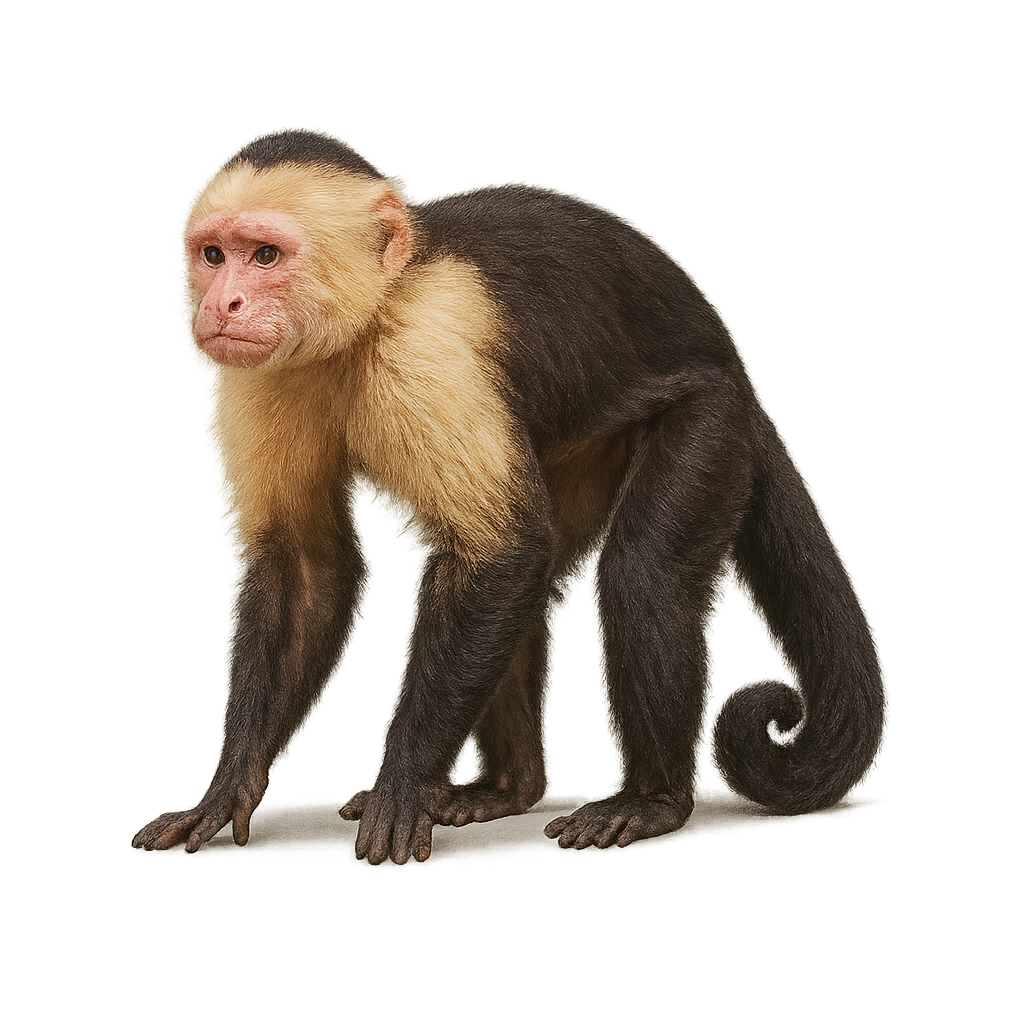Your wildlife photography guide.
Explore the white-faced capuchin in detail, study its behavior, prepare your shots.
Where to observe and photograph the white-faced capuchin in the wild
Learn where and when to spot the white-faced capuchin in the wild, how to identify the species based on distinctive features, and what natural environments it inhabits. The WildlifePhotographer app offers tailored photography tips that reflect the white-faced capuchin’s behavior, helping you capture better wildlife images. Explore the full species profile for key information including description, habitat, active periods, and approach techniques.
White-faced capuchin
Scientific name: Cebus imitator

IUCN Status: Least Concern
Family: CEBIDAE
Group: Mammals
Sensitivity to human approach: Suspicious
Minimum approach distance: 20 m
Rut period: September to October
Gestation: 155-160 jours
Births: March to April
Habitat:
Tropical forests, deciduous forests, and woodlands of Central and South America, especially in Costa Rica and Panama
Activity period :
Primarily active during the day, with peak activity in the morning and late afternoon.
Identification and description:
The White-faced Capuchin is a small, intelligent, and social monkey, easily recognizable by its pale face, framed by darker fur, and its agile, slender body. This primate lives in the tropical forests of Central and South America, primarily inhabiting the canopy, where it feeds on fruits, seeds, insects, and occasionally small vertebrates.
White-faced Capuchins are highly social animals, living in family groups or bands of up to twenty individuals. They are known for their great learning ability and curious behavior, often used in behavioral studies due to their intelligence and problem-solving skills. Unfortunately, like many other primate species, they are threatened by deforestation and habitat loss.
Recommended lens:
300 mm – adjust based on distance, desired framing (portrait or habitat), and approach conditions.
Photography tips:
Use a telephoto lens to photograph the white-faced capuchin, especially when it is in the trees or moving in groups. The soft light of the morning or evening is ideal for capturing sharp and well-lit images. Be discreet and respect their space to avoid disturbing their natural behavior, especially when they are in groups.
The WildlifePhotographer App is coming soon!
Be the first to explore the best nature spots, track rutting seasons, log your observations, and observe more wildlife.
Already 1 432 wildlife lovers subscribed worldwide

